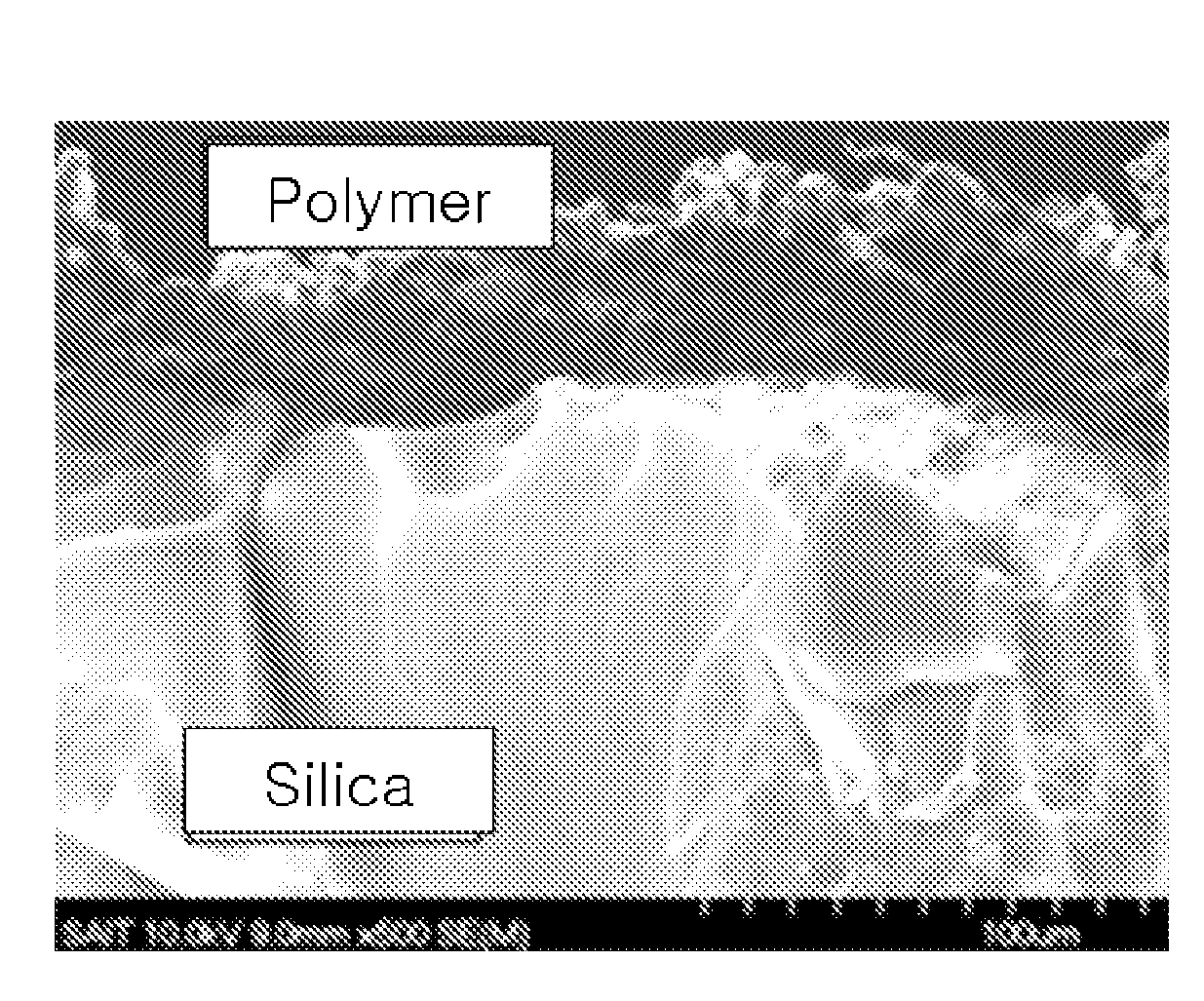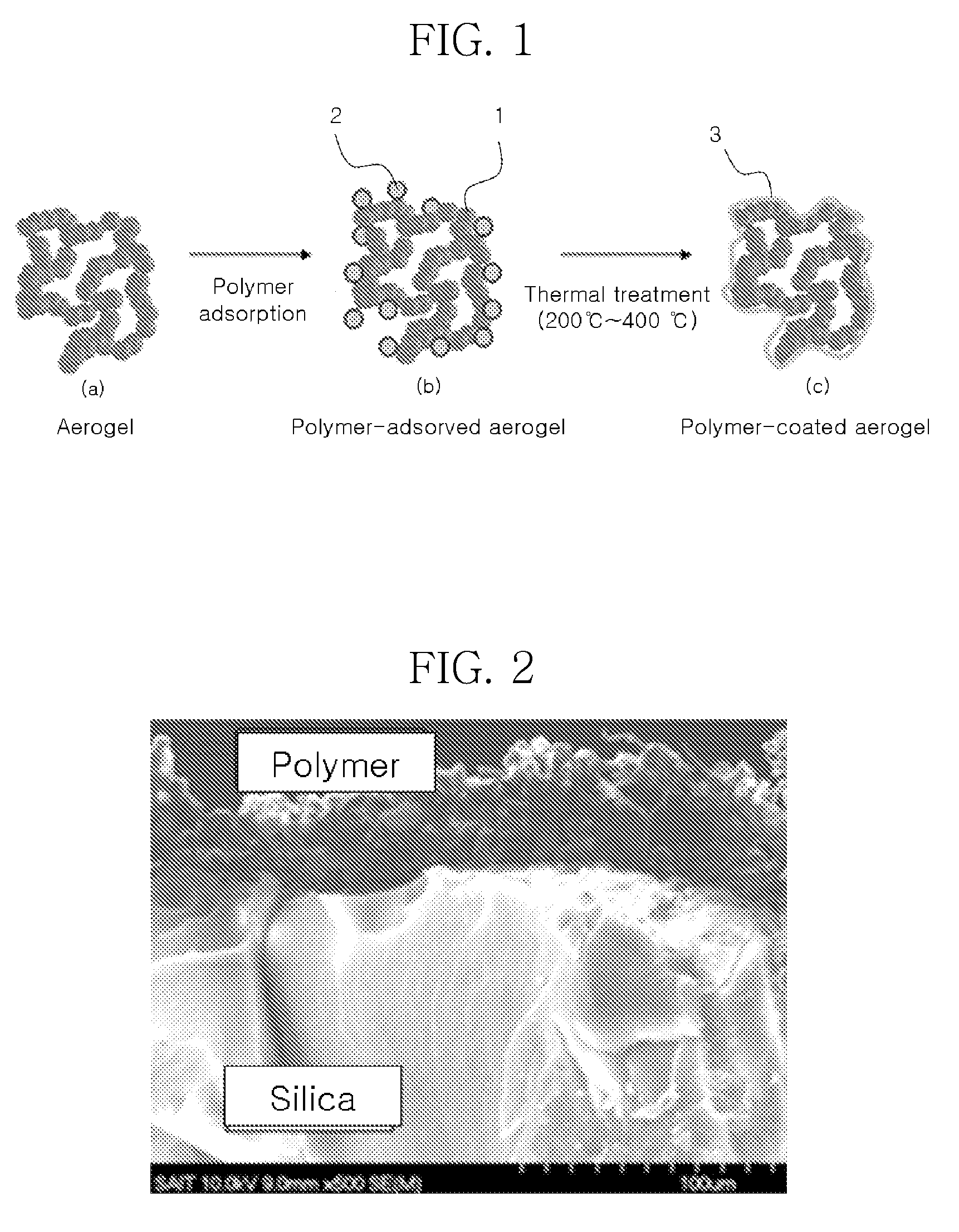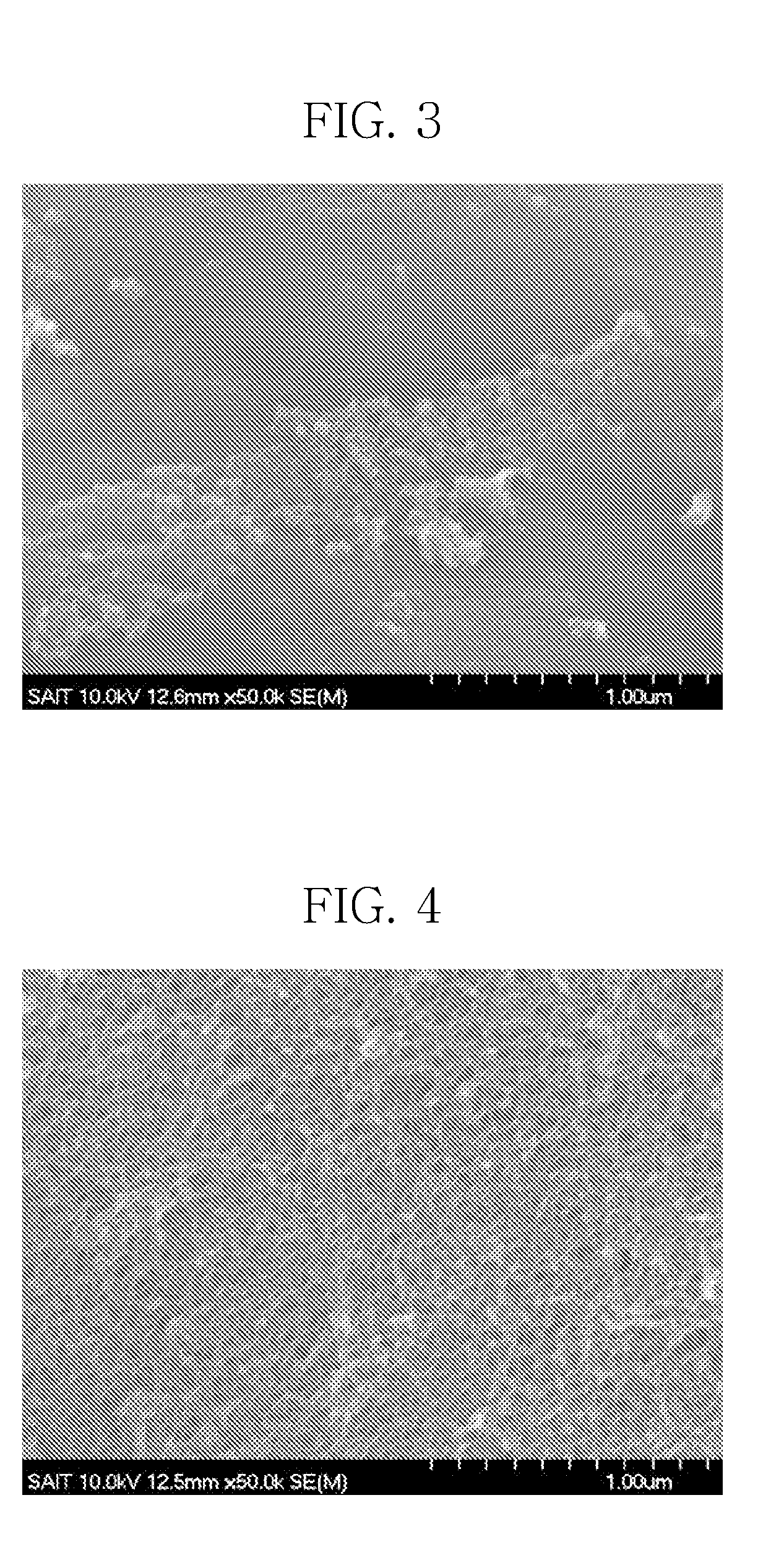Fused aerogel-polymer composite, methods of manufacture thereof and articles comprising the same
a technology of aerogel and polymer, which is applied in the field of fused aerogelpolymer composite, methods of manufacture thereof, and articles comprising the same, can solve the problems of difficult inexpensive manufacture of silica aerogels, material brittleness, cracking and breaking, and easy damag
- Summary
- Abstract
- Description
- Claims
- Application Information
AI Technical Summary
Problems solved by technology
Method used
Image
Examples
example 1
[0049]The following examples were conducted to demonstrate the superior properties of the fused aerogel-polymer composite over an aerogel. 20 grams of silica aerogel powder having a particle size of 1 to 3 millimeter (mm) having the brand name TLD 302® from Cabot. TLD 302 is a translucent aerogel having a particle size of 1 to 3 mm. 100 grams of PVDF-HFP (polyvinylidenefluoride-hexafluoropropylene) copolymer powder commercially available from Atofina Company and having a particle size of less than 3 millimeters. The aerogel powder and the PVDF-HFP in an amount of 12% by weight were loaded into a plastic container and were then subjected to ball milling at 1300 rpm for 4 hours or longer. The ball milling was conducted at room temperature.
[0050]During the ball-milling, the polymer was adsorbed onto the surface of the aerogel to form the aerogel-polymer composite. The aerogel-polymer composite thus obtained was subjected to thermal treatment in an oven at 250° C. for about 5 minutes to...
example 2
[0052]Polymer-coated aerogel was prepared in the same manner as in Example 1, with the exception that silica aerogel, TLD 203® (translucent aerogel having a particle size of 1 to 5 micrometers, available from Cabot) was used.
example 3
[0053]Polymer-coated aerogel was prepared in the same manner as in Example 1, with the exception that PVDF-HFP having an HFP content of 20% by weight and silica aerogel, TLD 201® (opaque aerogel having a particle size of 1 to 5 micrometers, available from Cabot) were used.
PUM
| Property | Measurement | Unit |
|---|---|---|
| melting point | aaaaa | aaaaa |
| temperature | aaaaa | aaaaa |
| thickness | aaaaa | aaaaa |
Abstract
Description
Claims
Application Information
 Login to View More
Login to View More - R&D
- Intellectual Property
- Life Sciences
- Materials
- Tech Scout
- Unparalleled Data Quality
- Higher Quality Content
- 60% Fewer Hallucinations
Browse by: Latest US Patents, China's latest patents, Technical Efficacy Thesaurus, Application Domain, Technology Topic, Popular Technical Reports.
© 2025 PatSnap. All rights reserved.Legal|Privacy policy|Modern Slavery Act Transparency Statement|Sitemap|About US| Contact US: help@patsnap.com



